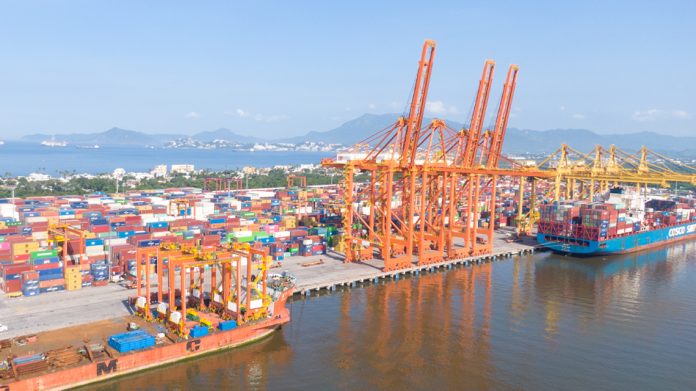Mexican port operators are gearing up for growth as a new US tariff regime could be in
place and the effects of the US, Mexico, Canada Agreement (USMCA) drive manufacturing
into tax free ones.
West Coast ports could see challenges from their southern neighbours as the evolving tariff
regime becomes more apparent, following the 2020 transition from the North American
Free Trade Agreement to the USMCA, which has created more stringent rules of origin on
goods manufactured abroad and exported to the US.
The Mexican market is growing in importance with the ports of Lázaro Cárdenas and
Manzanillo added 460,000 TEUs, 5.2%, to their volume throughput in the first half of this
year, taking their combined throughput to 3.3 million TEUs.
However, the capacity at both facilities is being expanded to cater for the expected growth
as new manufacturing relocates to Mexico.
Manzanillo’s SSA terminal will add 300,000 TEUs capacity, which will total 2.4 million TEUs by 2025. ICTSI’s Manzanillo facility will add a further 800,000 TEUs capacity, bringing the total to 2.2 million TEUs by 2027.
At Lázaro Cárdenas capacity will double from its current 1.1 million TEUs to 2.2 million TEUs by 2028.
“Terminals are adding inland investments to the upgraded facilities offering a better route
to [the US] market, including improvements to free zones and upgrades at the border,”
explained Eleanor Hadland, senior analyst for ports and terminals at Drewry Shipping
Consultants.
The USMCA is expected to increase the cross-border traffic significantly, particularly with
Mexican labour costs are currently at levels that are below those of the Pearl River Delta,
according to one industry observer.
Ahead of the transition of freight to the Mexican market, southern Californian ports saw
first half volumes for 2024 increased by 14.7% with the combined volumes of Los Angeles and
Long Beach totalling 9.02 million TEUs, compared to 7.87 million TEUs in 2023.
COVID disruptions saw an accelerated drift of market share to the US East Coast as terminals on the US Gulf and the eastern seaboard developed their handling capacity and ability to work significantly larger ships.
Hadland said: “There was a defensive move by US shippers to the East Coast when the West Coast [dockers’] contract negotiations were going on, when those discussions concluded shippers relaxed and some cargo returned to the Californian ports.”
According to Hadland the East Coast ports have not seen industrial action for many years,
but with the International Longshoremen’s Association (ILA) ready to strike the day after its current contract ends on 30 September and the Red Sea diversions along with disruption on the Panama Canal the “West Coast is winning again”.
The shift to the East Coast will continue in the long term, said Hadland, because of the
population distribution in the US, but this will be a “slow and steady process”.
Dynamar analyst Darron Wadey, said 2024 volumes are looking like they will be slightly
better than 2023. As such Wadey argued that Zim’s view, that the second half of the year
will be better than the first half is not supported by the data.
“The implication is that the peak season has been brought forward for this year and will not
be prolonged,” said Wadey, “I think that the first half of this year will be significantly
stronger, precisely due to shippers wanting to ensure their cargoes arrive without undue
hassle, memories of the coronavirus scramble for capacity are still fresh.”
Mary Ann Evans
Correspondent at Large







